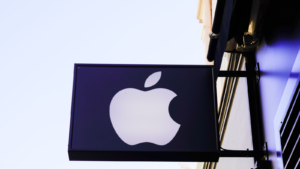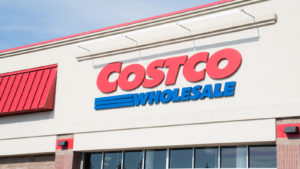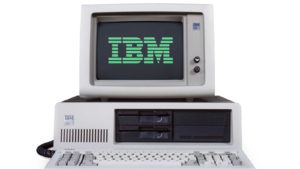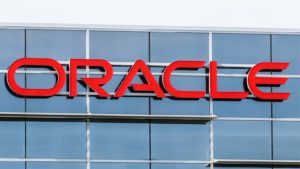Whether you’re building your portfolio from scratch or looking to rebalance as we head into the second quarter, it pays to look for top blue-chip stocks, particularly if you value stability and a solid track record of performance.
I like blue-chip stocks in my portfolios because they’re reliable and still provide the potential for long-term growth. When you’re looking at a blue-chip stock, you know that the company is well-established, financially sound and likely a recognized leader in its field.
And while these companies have strong balance sheets and can easily withstand an economic downturn, blue-chip stocks also have the advantage of long-term growth. Without exception, the blue-chip stocks on this list represent companies that enjoy solid management and can adapt when needed to changing conditions.
We’re using the Portfolio Grader to look for the best blue-chip stocks to buy for the second quarter based on earnings performance, growth, analyst sentiment and momentum. It would be hard to go wrong with these kinds of stocks in your portfolio.
Microsoft (MSFT)

Nothing says “blue-chip stock” like the biggest company in the world. Microsoft (NASDAQ:MSFT) vaulted over the next company on this list (yes, that’s a preview), and boasts a $3 trillion market cap these days.
The stock is up 60% in the last year, with much of it powered by the rise of generative artificial intelligence. Microsoft invested billions of dollars into OpenAI, the makers of ChatGPT, and incorporated that technology into its products.
Microsoft plans to keep that momentum going by investing nearly $3.5 billion into Germany, primarily in AI technology. The effort will allow Microsoft to expand its relationship with European customers and recruit top tech talent throughout the European Union.
Earnings for the fiscal second quarter of 2024 included $62 billion in revenue, up 16% from a year ago. Net income was $21.9 billion, up 33%, and earnings of $2.93 per share were up 33% from last year.
MSFT stock gets an “A” rating in the Portfolio Grader.
Apple (AAPL)

Apple (NASDAQ:AAPL) spent a long time as the No. 1 company in market cap before losing its crown to Microsoft this year. But I still believe that says more about Microsoft’s strength than any problems that Apple may have.
Granted, there are concerns about Apple’s growth, particularly in China. Apple faces serious competition in Asia from smartphone giant Huawei, which unveiled a 5G phone that relies on a China-made chip, thus maneuvering around U.S. sanctions.
Earnings for the fiscal first quarter of 2024 had Apple beating analysts’ estimates for sales and revenue but also showed a 13% decline in sales in China.
There’s still plenty to like about Apple, though. Apple brought in $119.58 billion in revenue in the quarter, including $69.7 billion in iPhone sales and $23.12 billion in Services revenue, which includes high-profit items like the App Store.
Apple is also betting big on its Apple Vision Pro virtual reality headset, which retails for $3,499 and can host more than 600 apps.
AAPL stock is up 22% in the last 12 months and gets a “B” rating in the Portfolio Grader.
Visa (V)

Visa (NYSE:V) is the biggest credit card company in the world, operating in over 200 countries and accounting for more than half the cards in circulation. That’s what I call a blue-chip company.
Visa operates as a middleman between banks, customers and businesses. It makes its money from fees that it charges merchants to process their credit card and debit card transactions. And it makes more money by partnering with banks to allow them to brand its cards with the Visa name.
Americans love their credit cards. Balances in the U.S. reached $1.13 trillion in the last three months of 2023, up from $986 billion in the previous year, according to the Federal Reserve Bank of New York.
While I’m sure that higher inflation last year played a part in that, Americans also are stubbornly bullish on the economy and will make big purchases. That bodes well for credit card companies like Visa.
V stock is up 26% in the last 12 months. It gets a “B” rating in the Portfolio Grader.
Costco Wholesale Corp. (COST)

Costco Wholesale Corp. (NASDAQ:COST) operates warehouse retail stores where customers can buy groceries, household essentials such as cleaning supplies, appliances, clothing and luggage. This isn’t your run-of-the-mill retailer.
As an investor, appreciate Costco’s business model. It keeps prices low through volume purchasing and reduced employee handling in its no-frills warehouses. Customers pay a membership fee of $60 per year just to access the store, which is a guaranteed revenue stream.
Costco operates 874 warehouses, including 602 in the United States. January sales were $104.94 billion, up 6% from a year ago. That builds on the momentum from the first quarter of fiscal 2024 (ending Nov. 26, 2023), in which Costco’s sales of $56.7 billion were up 6% from Q1 2023.
COST stock is up 44% in the last 12 months and gets an “A” rating in the Portfolio Grader.
The Coca-Cola Company (KO)

Americans also love their carbonated drinks, and nothing is more popular than Coca-Cola (NYSE:KO). The Atlanta-based company’s signature product has a volume share of 46.3% in the U.S., nearly double its closest competitor.
And it’s diversified, with over two dozen brands such as Sprite, Minute Maid and BodyArmor that all bring in annual sales of $1 billion a year or more.
The company branches out by introducing alcohol-infused drinks such as Simply Spiked and Jack Daniels Coca-Cola. And it’s a reliable dividend stock, with a payout of 1.9% and 63 consecutive years of dividend increases.
Revenue in the fourth quarter was $10.8 billion, up from $10.1 billion a year ago. Income slipped slightly, however, from $2.03 billion to $1.97 billion, and EPS of 46 cents was a penny less per share than Q4 2022.
KO stock has been roughly flat in the last 12 months, although it has bounced 11% higher since October. It gets a “B” rating in the Portfolio Grader.
International Business Machines (IBM)

With the importance of technology and tech stocks in today’s market, it’s no surprise that any list of top blue-chip stocks would include some tech names. And it’s nice to see that one of the oldest and most-established computing companies is still relevant and worth being a top pick.
International Business Machines (NYSE:IBM) has been a household name for years. It’s known for its AI-powered Watson platform and its new watsonx platform that incorporates generative AI and machine learning.
IBM has been focused on competing in hybrid cloud computing services to process data that flows between private and public clouds. Its 2019 acquisition of Red Hat gives it access to open-source software that is compatible with many public and private computing platforms.
Revenue in the fourth quarter was $17.4 billion, up 4% from a year ago. For the full year, IBM recorded revenue of $61.9 billion, up 2% from 2022.
IBM stock is up 42% in the last year and gets an “A” rating in the Portfolio Grader.
Oracle (ORCL)

Based in Texas, Oracle (NYSE:ORCL) is a computer technology company. As the globe’s biggest database-software company, Oracle provides cloud computing, applications, platforms and cloud software, and also sells servers and operating systems.
The legacy computing company has many profitable acquisitions to its credit, including buying the cloud software company NetSuite in 2026 and healthcare IT company Cerner in 2022.
The company has a promising partnership with Microsoft to make its cloud services more accessible to customers through the Oracle Database@azure project. The effort will give customers access to Oracle database services that run on Oracle’s cloud infrastructure and are deployed on Microsoft Azure databases.
It’s also expanding 66 existing cloud data centers and building 100 new ones to meet growing demand.
Earnings for the fiscal second quarter of 2024 showed revenue of $12.9 billion, up 5% from a year ago. Oracle pays a dividend yield of 1.5% and the stock is up 29% in the last year. It gets a “B” rating in the Portfolio Grader.
On the date of publication, Louis Navellier had a long position in MSFT and COST. Louis Navellier did not have (either directly or indirectly) any other positions in the securities mentioned in this article.
The InvestorPlace Research Staff member primarily responsible for this article had a long position in AAPL. The staff member did not hold (either directly or indirectly) any other positions in the securities mentioned in this article.

